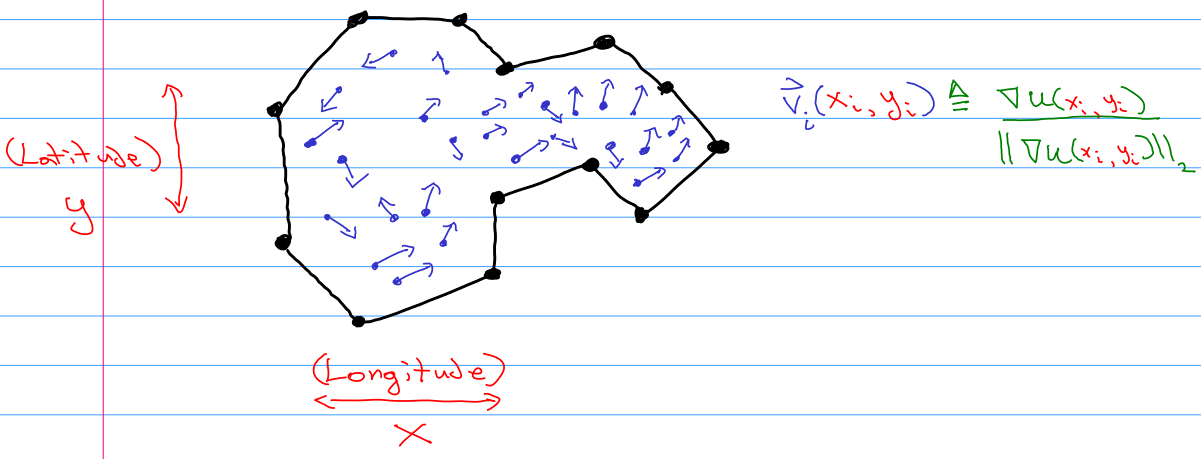- At the moment I do not have a well-posed problem.
- The goal is to produce plausible patterns of flow of moose through a small area.
- Sometimes moose tracks are plausibly from the same individual due to being aligned and close together, but usually the tracks are relatively isolated.
- There are plenty of machine learning approaches that I could use to estimate a map $\mathbb{R}^2 \mapsto \mathbb{R}^2$, but I would rather use differential equations for understandability.
- At a boundary point the gradient of $u$ could be perpendicular, parallel, or neither to boundary itself.
- I am not modeling time dependence because estimating the age of a track is quite difficult.
- I have started with assuming it is a function rather than a multivalued function, but a random vector is a reasonable way to go. The former might work if in practice even partially overlapping tracks are not exactly on top of each other. But the latter makes sense in that a given moose might go different directions from the same point depending on unmodeled details of its environment, or that distinct moose could have different brains or perceptions and consequently decide to walk different ways from the same point. Frank's point about crossing paths is excellent: namely that the likely existence of crossing paths precludes the existence of a single-valued vector field.
- I have not decided what is reasonable to assume about the curl; I will think more on it. As Frank pointed out, the curl of the gradient of a field must be zero.
- Random walks on $\mathbb{R}^2$ might be fruitful. The more explainable the better, but I don't mind sprinkling in a little bit of noise from a stochastic process.
- The ultimate goal is to estimate likely paths that the moose are taking into and then out of the bounded region.
- Whuber raises a good point that specific paths are followed by the moose. In theory there should be no vectors where the moose did not go. The difficulty is we do not know where the moose have gone, and wish to infer it.
- SextusEmpiricus suggested that a flux formulation is promising for resolving the problem of crossing paths.
- My guess is that there are probably zero moose in the bounded region on a given day. What I suspect happens is that moose occasionally pass through the area as they browse.
- Sometimes it is possible to tell if tracks are 'extremely' fresh, but in general track ages are not reliably guessed (by me anyway).
Became Hot Network Question



